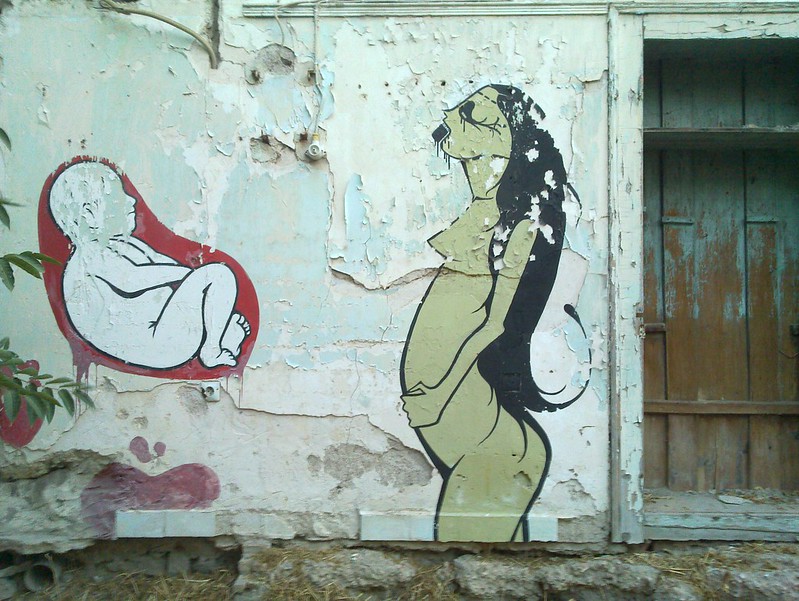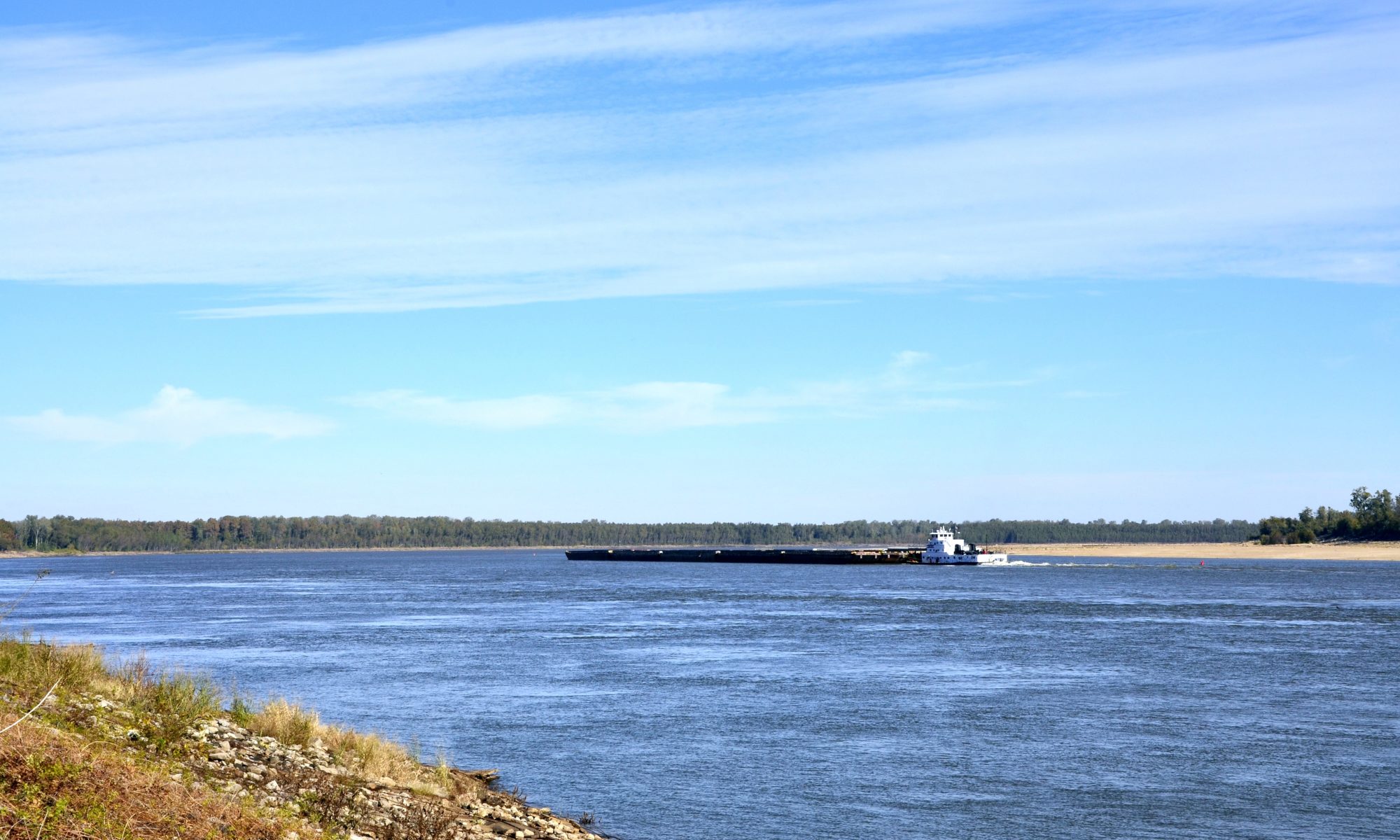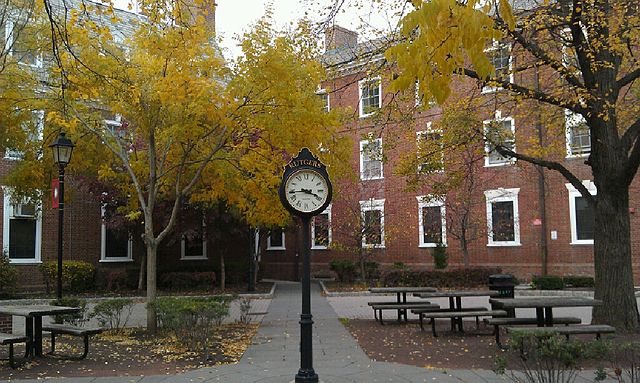“I’m thinking about making a sourdough starter.”
I said this in front of my mom in hopes that she would make the sourdough starter and then share some with me. Just like millions of other people spending the majority of my time at home since the pandemic started, I thought baking would be a therapeutic way to ease the stress of 2020. Plus, bread is awesome.
On April 19, my mother came through with the sourdough starter, and lots of homemade bread. I took it home in a mason jar and was given a Post-it with feeding instructions.
On April 6, 13 days prior, I had taken a pregnancy test that turned out to be positive. I’m 35 years old, so I’m considered to be at an “advanced age” for someone to have a child. Even though I’d been off birth control for 6 months and we were actively “trying” as they say, I didn’t expect to be pregnant.
I wasn’t expecting it because for a few days prior to the test, I had been experiencing horrific cramps and back pains, which I attributed to an oncoming period. They were 10 times worse than any period cramps I’d ever had. I wrote in my journal, “These cramps aren’t normal.”
When I was a day late for my period, I decided to take the test just to see and it turned out I was pregnant. I called my doctor’s office. I already had an appointment with them scheduled on May 20 for my yearly exam. They wouldn’t let me make an earlier appointment. That meant I wouldn’t be able to see a doctor for a month and a half. I knew I would have to wait a bit, but that seemed outrageous. When I told the nurse about the cramping, she said, “I mean, you can cramp some,” while chomping her gum. She offered nothing else.
The cramps lasted around 3 weeks. I used a heating pad to help relieve the pain. I worried about the ibuprofen I’d taken before learning I wasn’t supposed to, or the drinks I’d had the weekend prior to finding out. I was worried the entire time that something was wrong but didn’t want to be too needy.
I brought home the sourdough starter when the cramps were still there but easing a bit. I fed it for the first time on April 25. I mixed together 4 ounces of flour and 4 ounces of water and poured it on top of the already existing starter. I stirred it together and looked inside. There were bubbles. It smelled like flour. I had no idea if this was correct. I left it out overnight to repeat the process the next day and put it back in the refrigerator.
On April 27, there was a brown spot on the toilet paper when I used the bathroom.
The brown spots continued each time I went to the bathroom and once they began to look like blood, I called my doctor’s office. The nurse told me to “watch it.” As it got worse and I called again, she rudely told me to go to the emergency room without any explanation.
I decided to find another doctor. Luckily, I was able to do this quickly. This doctor made an appointment for me but also recommended I go to the emergency room but explained why and did so in the most caring way.
I agreed to go.
Ian, my husband, rushed home from work to take me.
We took our masks and walked up to the emergency room where they took our temperature and asked if we had any symptoms of COVID. They told me Ian couldn’t come in.
There’s isn’t a good time to have a miscarriage, but it turns out, there is a bad time. And that time is during a pandemic.
Ian made his way to the parking lot where he would stay for four hours, save a minute or two here and there when he got food and gas.
I walked inside. I was happy to see that I was the only patient in the waiting room at the time.
The woman at the counter got my vitals and asked me questions about my symptoms, family history and medications from 6 feet away and then told me to sit down.
I waited less than 20 minutes and was taken to an exam room.
I’ve never been a modest person in front of health care workers, so when the nurse gave me a gown and told me to get undressed, I started immediately and she said, “Oh, um, I’m going to step out.”
She came back and gave me a cup for a urine sample. “The bathroom is out in the hall.”
I kind of wondered why she told me to get naked if I was going to have to go into a hallway bathroom to pee. I kept the gown on but put my pants and shoes back on so those in the hallway wouldn’t see my backside.
When I got back to the room, I took my pants off again and got under the sheet. The nurse came back in and started an IV just in case. She took two large vials of blood and then put what I assume is saline into the IV and plugged it in.
Then, I waited. The next step was the ultrasound. I’d say I waited about an hour before a man came to take me to that area of the hospital.
He let me cover my legs with a sheet.
Riding in a wheelchair in a hospital to another section of a hospital is eerie. I don’t know if it’s the pandemic or just how resistant I am to the clinical vibe, but I didn’t like it. It was quiet and everyone we passed was silent. I could only see their eyes because of the masks.
He rolled me into a cubicle in the hallway to wait again.
The ultrasound tech came and got me.
I laid on my back on the stretcher and watched as she applied warm jelly to the little ultrasound thing.
I was wondering if I would hear a heartbeat, or if not hearing one would be a bad sign. She didn’t explain either way.
She didn’t say much at all actually, other than a few words here and there to make sure I was OK.
She was looking deep into the monitor, like she couldn’t see anything. She just kept searching.
I asked, “Can you not see anything?”
It was obvious she was trained to not give me any information that might indicate what was going on. She told me that because it’s late in the day, I may have gas build up and that makes it hard to see. I joked, “I did have Mexican food for lunch.”
She didn’t find it funny.
I’d say she looked around and took pictures for at least 20–25 minutes. Because she couldn’t see anything, she asked if she could do a vaginal ultrasound. I thought that might be the case and kind of wished we had just started with that.
I said, “Whatever you need to do.”
She told me to go empty my urine completely and then come back and sit on the foam wedge she provided.
When I got back into the room, I perched myself on the foam wedge so she had access for the procedure.
She came back into the room and showed me a wand that was not wide, but about 12 inches long.
“The whole thing won’t go in,” she said. I wish this statement had provided more solace.
She covered the wand in a plastic covering that was full of cold gel. She then rubbed the top with KY Jelly.
I’ve had many pap smears, and this felt kind of like that, except it lasted much, much longer.
I can tell why she made me pee first. As she moved the wand around to take pictures of my ovaries and pelvic area, it put pressure on my bladder and stomach. I was genuinely worried that I may pee or get rid of some of that “excess gas” on her.
While I was staring at the ceiling, trying to distract myself, I dubbed her the Jacques Cousteau of my lady parts. This almost made me laugh out loud. That would have been very weird.
She finally stopped and said, “I’m just going to leave this here for a second and go ask if they need any more pictures. I don’t want to have to re-insert the wand.” Luckily, she wasn’t gone long. It’s very strange to have something foreign inside of you. I wondered if it would be weird the next time I had sex, and then I wondered if or when I’d ever want to do it again.
When she came back into the room she said they had all they needed and took the wand out. She placed two washcloths on my stomach and told me I could go clean myself.
It felt like a drunken college party where I’d made a poor choice in judgment and now it was time to wipe up.
When I cleaned myself, there wasn’t that much blood. I thought that might be a good thing.
She rolled me back to my cubicle to wait to be taken back to the emergency room. On the way, she asked if I had any pain or just the bleeding. I told her just bleeding. I also took this to be a potentially good sign.
As I sat in my cubicle, I wished I had my phone. I wanted to tell Ian what just happened. I was gone at least an hour from my exam room. I could see a couple of nurses at a desk. They were talking and working. After about 10 minutes, one of them took me back to my room.
I waited about another hour for the nurse practitioner to come in.
I kind of wished that I didn’t have the mask on because all she could see were my tired eyes that were now glazed with tears. I didn’t know why I was about to cry before she even told me what was going on.
She told me that the pregnancy test was positive, and all the blood work pointed to a pregnancy but that the ultrasound didn’t show anything in the sack. So either I was earlier than I thought and it wasn’t big enough to see yet (this didn’t sound right because I knew exactly the first day of my last period) or my body only thought I was pregnant and prepared everything for a baby (this sounded too cruel of my body to do to me so I didn’t want to believe it) or I was having a miscarriage (this seemed to be the correct diagnosis) or it was a tubal pregnancy (something she kept saying was a worst-case scenario).
They couldn’t tell me for sure, so she just repeated this information a couple of times. I would need to go the appointment I had set up to see if this certain blood count went up.
I had to wait a few more minutes to leave, so they could get more information from me and take my IV out.
Ian pulled around to pick me up. His eyes were red. He took the news to mean there was still a chance the baby could be OK. This is not how I took the news. He wanted me to be positive. I wonder now if I caused this with my negative-ass attitude. It was never my intention to be negative, just to have realistic expectations. I’m 35, overweight; this was my first pregnancy, and I was on birth control for over a decade. These things happen.
I didn’t know what to feel that night, but I do know that I am very dependent on Ian. At the time, I really didn’t feel like talking to or seeing anyone else.
We decided he’d still go to work the next day because he didn’t want to make a bad impression at the new job he’d been able to find when his income stopped due to the virus.
I went to sleep and woke up around 6 a.m. to pee the next morning. When I wiped, there was quite a bit of blood that had clots in it. It was at that point I felt sure that I was having a miscarriage.
I woke Ian up around 7 to tell him. I was crying.
He did go to work but after he explained the situation to his boss, he was able to come home for the day.
I called the nice nurse from the day before. She understood why I thought I was having a miscarriage. She said she would speak to the doctor and get back with me.
A few years ago, I wrote a novel during the National Novel Writing Month. It’s not very good. I bring it up because in that novel, the main character has a miscarriage. I always wondered if I got it right.
I don’t think I did. At least not for me. It isn’t as dramatic as I made it physically. At least not all at once. We ate junk and watched tv, and I continued to have a miscarriage. It was a slow, marginally painful process in which I cramped and bled for a week, much like a period. After I told my doctor in the morning that I felt I was miscarrying, that was the worst day. For about an hour, it was kind of like a traumatic horror film. I was able to see the bulk of the fetus. I don’t know why I didn’t expect that. My body quite literally rejected the pregnancy.
The other part I got wrong is this ferocious connection I thought I’d have with the baby. I don’t think I let myself do that because I was too worried something would go wrong. I don’t know if that ended up being a good thing or bad thing.
It’s not that I’m not sad. I am. I’m very sad. Sadder than I thought I would be, but it’s not for the reasons I thought.
I’m sad for Ian. He was so excited. I know he will want to try again. I know it disappointed him when I told him I wasn’t sure, or that I at least didn’t want to talk about that yet. I know I disappointed him that I didn’t have hope after they told me there wasn’t anything showing in the ultrasound.
I’m sad because I know so many people that are close to me who are expecting happy, healthy babies. Their milestones sting. Seeing the ultrasound of someone else’s healthy baby felt like a punch in the gut and knowing I can’t be as happy as I should be for those people also makes me sad.
I’m sad for my parents. I know they wish they could help in some way. I know they were excited for me to have a baby.
I feel guilty. I feel like I could have handled the pregnancy better emotionally, had a better attitude, prepared my body for it better.
Weirdly, I’m embarrassed. I don’t want to have to tell people that I didn’t host a baby well enough to get it past 8 weeks. I even felt embarrassed to write that.
On May 2, I added more flour, more water to the sourdough starter and then did it again the next day.
Right after the miscarriage, if I was left alone with my thoughts for too long, I would spiral into sadness. I started recognizing this pattern, so I would create random chores to keep myself busy. Give the dog a bath. Clean the toilet. Mow the lawn.
In between all, knowing that I failed in some way. The logical part of me knows that this is just “one of those things,” but most of me thinks I screwed it up. I also have a sense of guilt for not being sympathetic enough to people I’ve known who have had a miscarriage. I should have been better to them.
I continued adding starter for 2 weeks and then on May 16, I dumped half of it in the trash. I watched as the floury globs splashed on top of other discarded trash, dripping down the sides of the bag. The jar couldn’t hold the starter anymore. It wasn’t healthy. It had to be discarded. It seemed like such a waste.
On May 17, I added more flour, more water.
Sadness can best be described as a dull, nagging loneliness that comes out of nowhere. Then a tug of curiosity if I’ll get pregnant again, or if I’m too scared to even want to be pregnant again. I talk about the miscarriage a lot, and I think I get on people’s nerves. Or that people think I should move on. And I have. But it’s always there, unlike the sourdough starter, which I ended up discarding again. Maybe it’s just not time for me to keep something alive other than myself.
Photo at the top of the page: “miscarriage” by kouk is licensed with CC BY 2.0. To view a copy of this license, visit https://creativecommons.org/licenses/by/2.0/



